

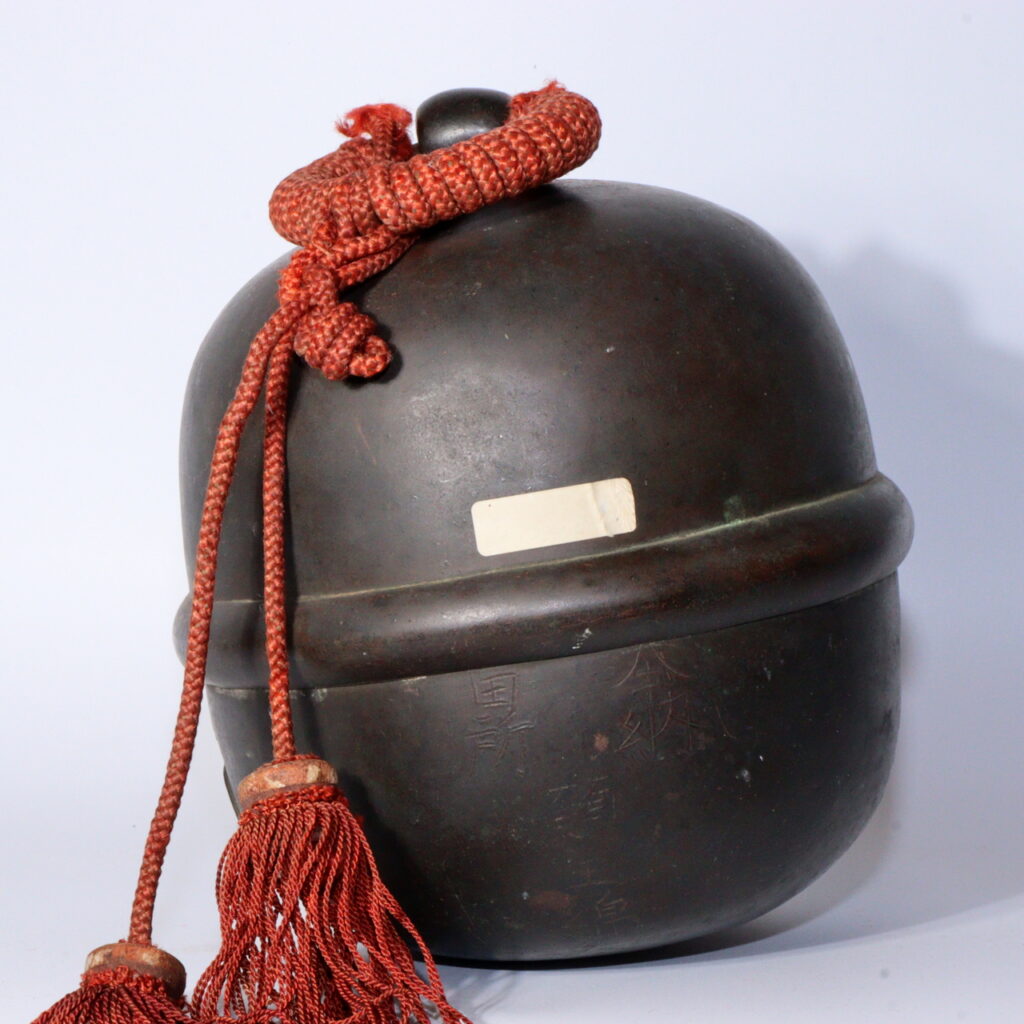
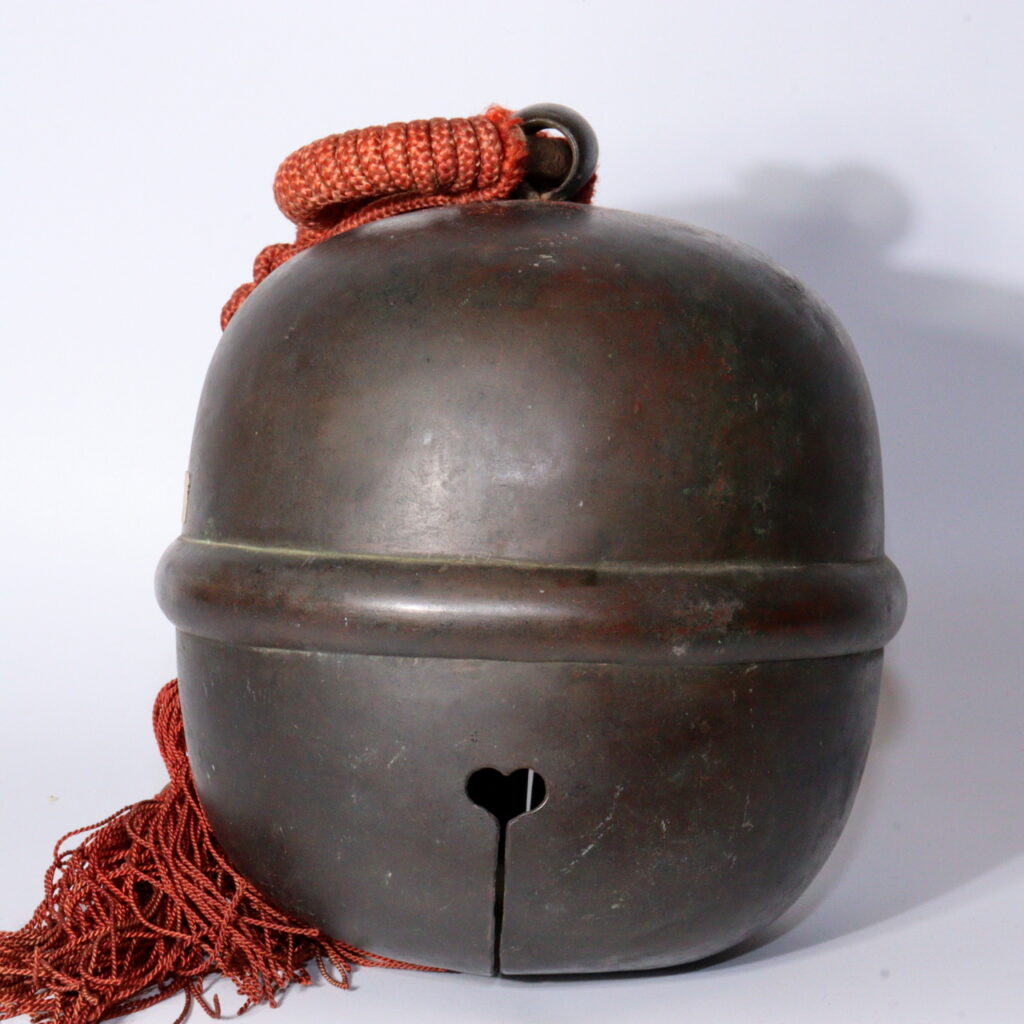
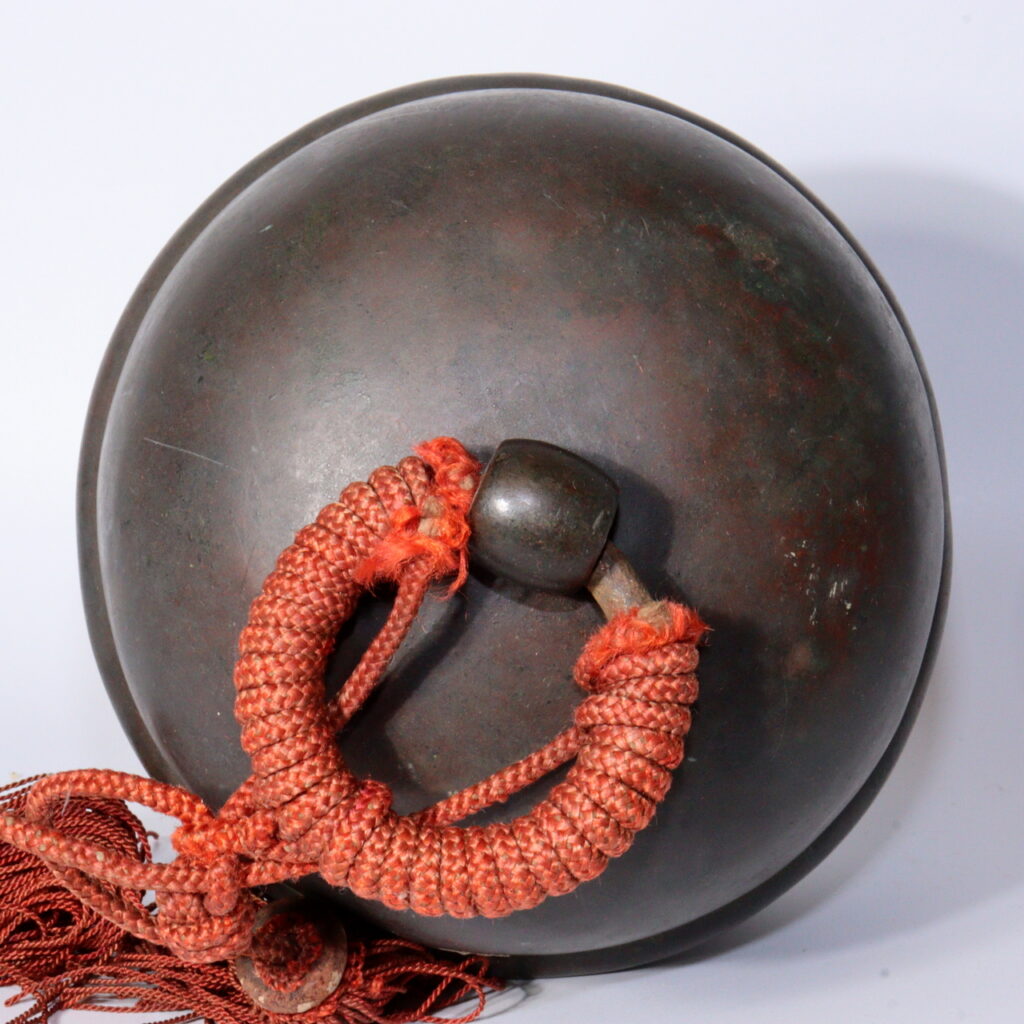
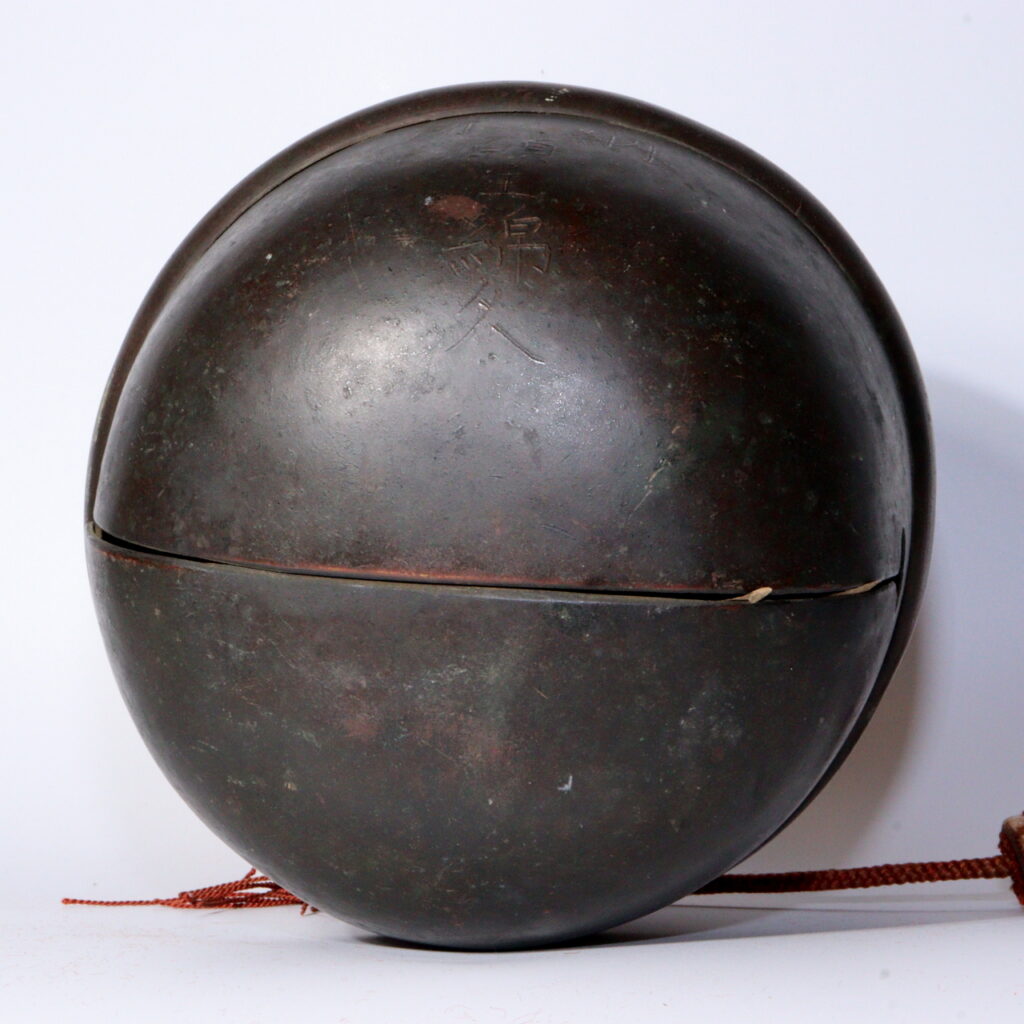


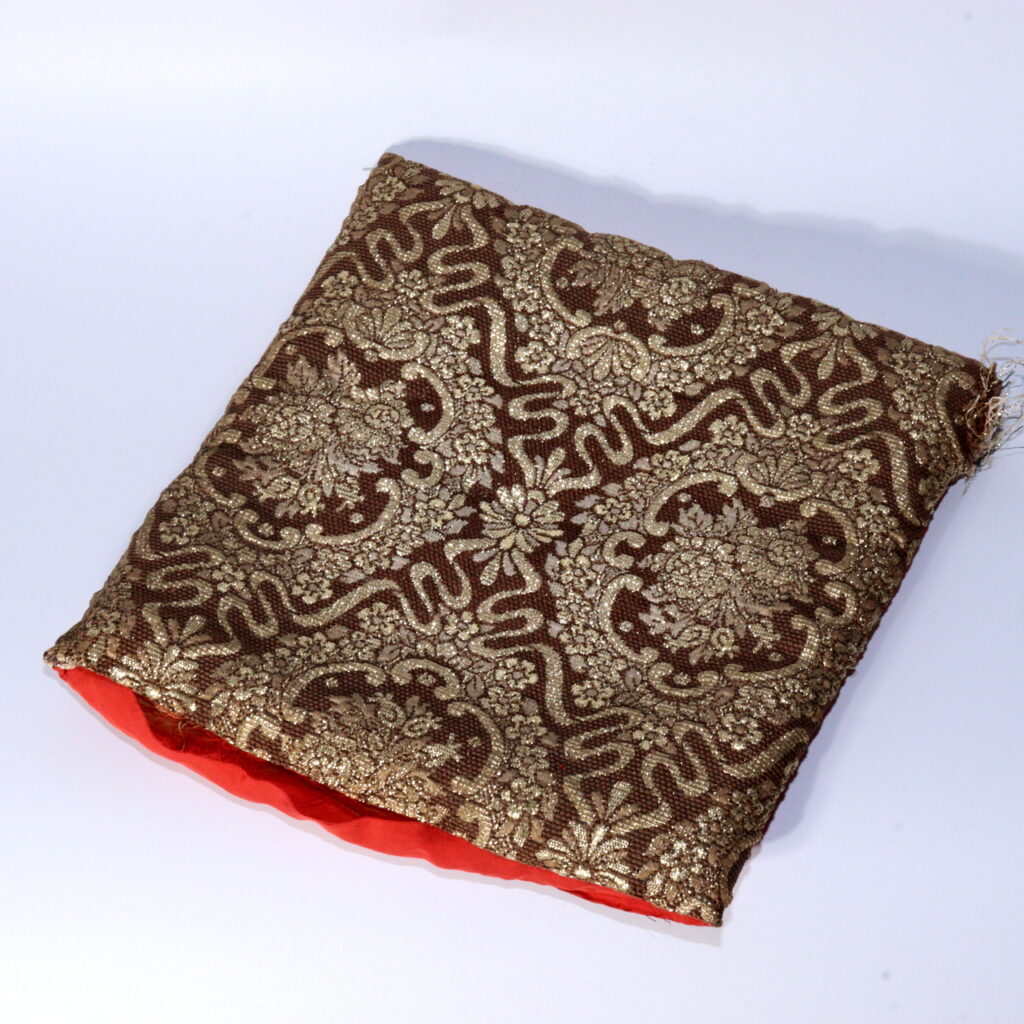
A Voice of the Sacred, Cast in Bronze
Among Japanese antiques that embody both artistry and spirituality, the Shinto shrine bell, or suzu, holds a unique resonance—literally and symbolically. This particular example, a Hontsubo Suzu, once echoed within the precincts of a Shinto shrine, its sound believed to bridge the human and divine realms.
Today, such bells are treasured not only as devotional instruments but also as sculptural works of Japanese metal craftsmanship, carrying centuries of ritual tradition and aesthetic refinement.
The Story Behind This Piece
This antique copper shrine bell was not a decorative object—it was an active part of shrine worship. The surface bears inscriptions of the donor and supplicant, memorializing those who offered the bell to the gods. These engraved names connect it directly to the faith and generosity of a bygone community, a trace of living devotion preserved in metal.
Known as a “Hontsubo Suzu,” this form of bell is characterized by its hemispherical shape and soft domed contour, designed to produce a deep, resonant tone when struck. Such bells were typically suspended in shrine halls or used in purification rituals, their chime accompanying offerings and prayers for protection, harvest, or renewal.
In the context of Shinto belief, sound (oto) is a conduit of purity—it disperses spiritual impurities and calls forth the presence of the kami (deities). Thus, this bell served not just as an instrument, but as a medium of communication between the visible and invisible worlds.
The Beauty and Craftsmanship
The bell is forged from solid copper, with a deep natural patina developed through decades of use and quiet repose in the shrine. Its minimalist form—devoid of ornate decoration—reveals the Japanese reverence for functional beauty and wabi-sabi aesthetics, where elegance emerges from restraint and age enhances value.
A woven red silk cord crowns the piece, allowing it to be hung or displayed as originally intended, while the inclusion of a brocade cushion underscores its ceremonial dignity. The contrast between the dark metal and the textile’s gold-threaded patterns embodies a harmony of earth and heaven, humility and splendor.
Unlike many Buddhist temple bells, which are large and elaborate, this Shinto bell speaks in quieter tones—its purpose not to summon masses but to sanctify intimacy. This distinction reflects the differing spiritual philosophies: Buddhist bells resonate through emptiness, while Shinto bells resound through purity and life force.
Its Value for Collectors Worldwide
For collectors of Japanese antiques and scholars of ritual art, this bell offers both historical and cultural significance:
- Authentic provenance – The donor inscriptions attest to genuine shrine use, enhancing its documentary and spiritual value.
- Traditional craftsmanship – The shaping of the Hontsubo Suzu exemplifies Japan’s mastery of bronze and copperwork, emphasizing tone and tactile presence.
- Cultural symbolism – A pure expression of Shinto philosophy—simplicity, reverence, and natural harmony.
- Display versatility – Whether placed in a modern interior or a traditional alcove, it introduces an air of quiet sanctity and Japanese spiritual design.
Such an object transcends mere collecting; it serves as a bridge to the sacred, inviting contemplation of the timeless rhythms of offering and gratitude.
Conclusion & Product Link
This Antique Japanese Hontsubo Suzu embodies the essence of Shinto devotion—pure sound, pure form, and the silent beauty of age. Its presence transforms any space into one of quiet reflection, where tradition and craftsmanship converge.
👉 View this item here:
https://koedo-sun-art.com/search?q=BOS876&options%5Bprefix%5D=last
If this piece has already found its new home, please explore our other Japanese antique collections here:
🔗 https://koedo-sun-art.com